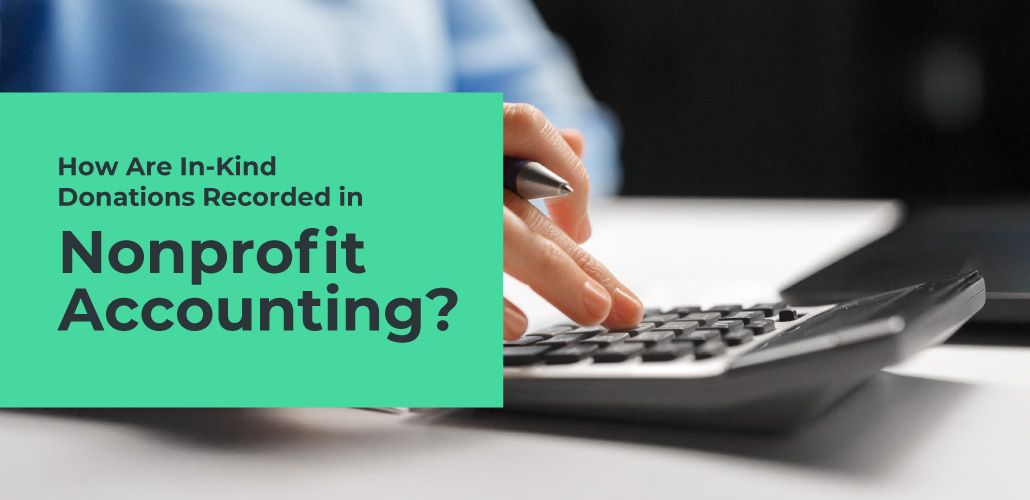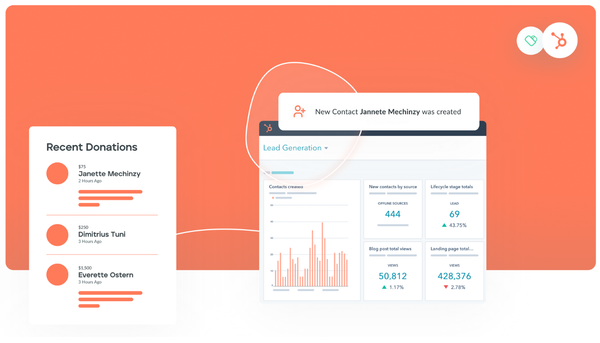How Are In-Kind Donations Recorded in Nonprofit Accounting?
In-kind donations provide an alternative method of donating for nonprofit supporters, but they’re handled differently for nonprofits. Learn more in this guide!

Your nonprofit’s fundraising team often focuses heavily on the money you can earn by running fundraising campaigns for your organization. This makes sense! After all, you didn’t put in time designing your online donation page and stewarding your supporters for no payout!
However, in a turbulent economy or when personal financial challenges arise for supporters, it may be more challenging to donate these funds. This is when your organization might get creative, pushing alternative methods of fundraising to support your mission. The best example of an alternative fundraising opportunity is in-kind giving.
In-kind donations are the gifts of goods and services donated to your nonprofit in lieu of money. Think about it this way: your nonprofit would spend the money you earn on things like website designers, supplies to run your programs, and venue space for events. But when these resources are given in-kind, you get to bypass the purchasing step, saving your organization money.
While not monetary contributions, your nonprofit accounting team still needs to record the acceptance of an in-kind donation. We’ll discuss how and why to record these gifts throughout this guide. Let’s get started.
Why record in-kind donations?
In order to comply with the federal regulations for nonprofit accounting, nonprofits need to follow the standards set out in the generally accepted accounting principles (GAAP). GAAP standards dictate that in-kind donations need to be recorded in your nonprofit’s accounting records.
If your nonprofit needs to undergo a financial audit, you’ll be expected to have accurately recorded your in-kind donations and taken appropriate next steps. For example, you might need to provide receipts to donors who give donations of a certain size.
You should record your in-kind donations not only because it’s required, but also because it can be helpful for your organization to do so. Let’s say your nonprofit receives an in-kind donation of an event space where you can host your annual auction. This is a great opportunity to save money on auction expenses! However, if you don’t record the in-kind gift, you might forget about that expense when it’s time to create a budget for next year’s auction.
Accurate and detailed records of these types of expenses can help when planning future events, campaigns, and projects.
Determining In-Kind Donation Values
Before recording in-kind donations, you’ll need to determine how much they’re worth. These donations can come in all shapes and sizes, from a simple canned food drive to the gift of a car to pro bono legal services. However, they all help to supplement your nonprofit’s budget.
Sometimes it’s very simple to determine the value of your in-kind gifts, and sometimes it’s much more challenging. Goods tend to be more straightforward in their value than services, but it’s important to understand how both types are valued.
Goods
It’s often easier to determine the value of donations of goods than services. If the tags are still on the item, you can simply use the price on the label to determine the monetary value of the gift. If there is no tag available, you can usually find the value of the gift by conducting a simple Google search.
Services
It can be more challenging to find the value of services donated to your nonprofit, however, these are incredibly valuable gifts. Imagine a lawyer, accountant, or nonprofit branding expert providing services to your nonprofit free of charge!
Calculate how much these professionals usually charge clients per hour of their work. For example, a graphic designer might charge $5,000 to create a new brand guide for nonprofits. You simply need to ask them how long those projects typically take. In this case, let’s say it takes about 50 hours. That means their services are worth about $100 per hour. If they donate 30 hours of work to your nonprofit, that means the services are worth $3,000.
Remind those who donate services to your nonprofit to keep track of how much time they spend working with your nonprofit so that this calculation will be accurate.
Where to Record In-Kind Donations
Initially, your in-kind donations should be recorded with the rest of your nonprofit’s accounting information in your chart of accounts. It should be included as both a debit and a credit in the accounts.
This means if you receive a service worth $1,000, you need to enter it into your system twice—once as $1,000 in credit and once as $1,000 in debit. This ensures that when reports are pulled from your nonprofit chart of accounts, the total monetary gain from these donations is still net zero.
Having your in-kind donations recorded in your chart of accounts means that these gifts should show up in your nonprofit’s various accounting statements and reports. Your nonprofit accountant should always double-check that any donations of goods show up on your annual Form 990 because it’s required by the IRS. While services don’t technically need to be featured on your tax form, they should still be recorded in your accounting system to comply with GAAP standards.
Note that the IRS has different rules and requirements for nonprofits that accept vehicles as in-kind donations. Make sure to thoroughly research these requirements to ensure you record these donations properly.
Collecting In-Kind Donations
Recording in-kind donations may sound confusing and challenging, but once you’ve done it a couple of times, it gets much easier. We recommend nonprofits encourage in-kind donations, asking for them alongside the monetary gifts brought in by your various fundraising campaigns.
The first step to encouraging these gifts is to update your nonprofit’s gift acceptance policy. Include a section of this policy to say what you would and would not like to accept as an in-kind donation. For example, many organizations say that they would not accept donations of live animals. This gives your nonprofit grounds to refuse donations of items that you can’t use without being rude to your donor.
You can also specify the preferred in-kind donations that you want in this policy. Some common valuable in-kind donations include:
- Cars. While these require you to record the value slightly differently, they can be incredibly useful. For example, consider a nonprofit that includes services to fix cars. They could easily fix up the car and resell it for additional nonprofit revenue.
- Canned goods. Food drives are incredibly common for nonprofit organizations, especially food banks. People typically have cans they’re not using in their kitchen that can be donated to help the community.
- Legal services. When nonprofits expand or change their services, they likely consult a lawyer first. Pro bono legal services are incredibly helpful for any organization.
- Stocks. Many larger nonprofits will accept stock holdings as donations from their supporters. This is incredibly valuable to donors who itemize their taxes. If they donate a mature stock, they can take a deduction on the full amount of the stock donation rather than paying taxes on the dividends if they were to sell it.
Once you’ve outlined the types of in-kind gifts that are preferable for your mission, you should communicate that list to your supporters! Write emails, newsletters, social media posts, and other fundraising messages that will help you collect these valuable gifts.
Especially in times of economic uncertainty or turbulence, in-kind donations may provide an alternative method of donating that your supporters are more comfortable with. When donors provide these valuable gifts to your nonprofit, ensure you’re recording them correctly and thanking them appropriately for their generosity.





